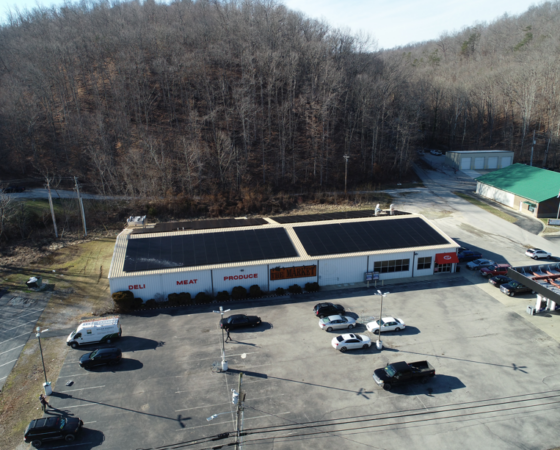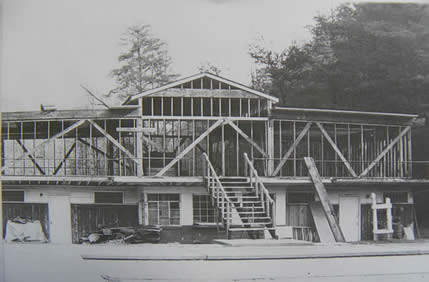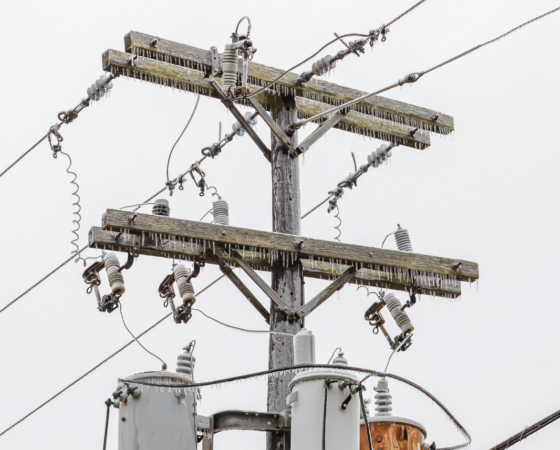Mountain Association’s energy team began working with Kentuckians for the Commonwealth’s London field office several years ago to create a demonstration project of a net zero field office in Eastern Kentucky. A net zero building means that the total amount of energy used by the building on an annual basis is roughly equal to the amount of renewable energy created on the site.
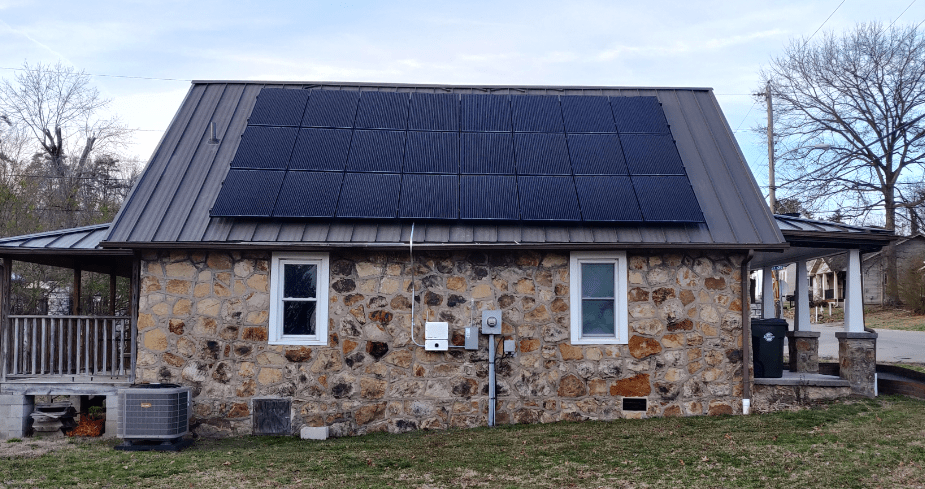
The field office is one of seven KFTC offices in the state, but it is the only office KFTC owns. Four of KFTC’s 30+ employees work out of the London office. The office hosts regular community meetings and other public gatherings for the larger area.
This – along with its proximity to a busy road and visible roof – made the office a great demonstration site.
Our energy staff started with an on-site energy efficiency audit of the building in 2012. This process includes a walk-through the building measuring energy use of lighting, heating and cooling systems, and appliances. We also conducted a blower door test, which checks for leakage in the building. After the audit, we developed a report with a list of recommendations for energy efficiency upgrades, with the goal of eventually adding rooftop solar.
Over the next eight years, the office implemented the recommendations in the report, making the building more energy efficient through air-sealing, spray foam insulation in the crawl space and attic, LED lighting. Additionally, when upgrading office items, they chose ENERGY STAR certified equipment.
In February 2020, the last step of adding solar panels was completed, making the building net zero. It is estimated that the combined upgrades will pay for themselves in just 10-12 years.
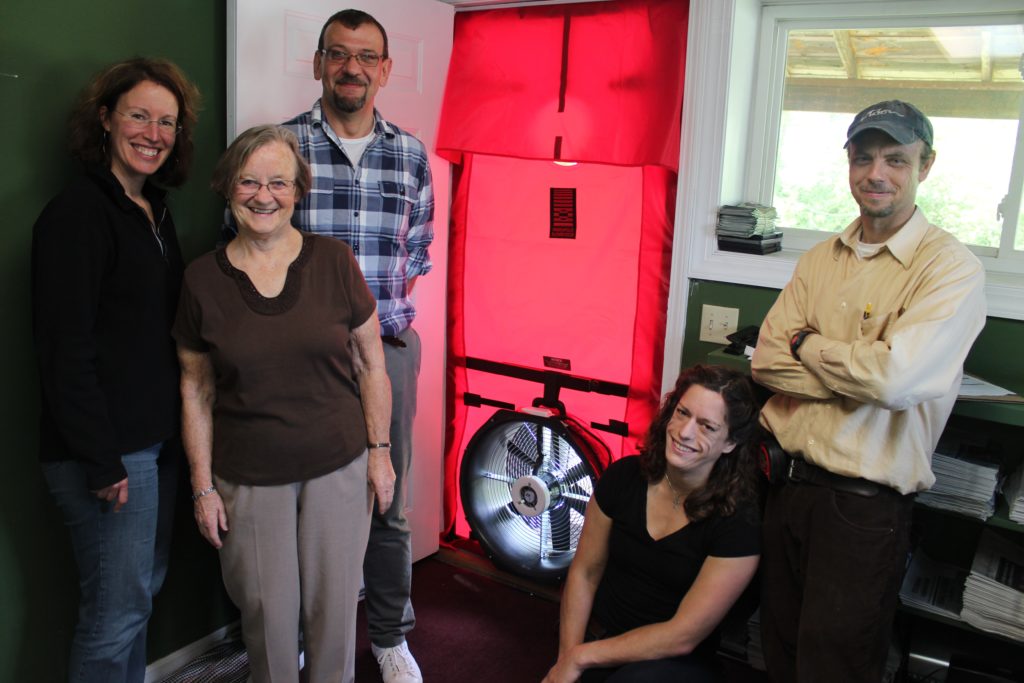
The Mountain Association and KFTC are proud to work together on this demonstration project of what is possible in Eastern Kentucky. As we fight for public policy that supports renewable energy, it is important for us to align our own practices with our values. The Mountain Association Berea office added rooftop solar in early 2012 and we are currently working with partners to add solar to our Hazard office.
We see this as a small, but important, step toward combatting climate change. As Kentucky uses more coal its fuel sources, each kilowatt-hour of energy saved here reduces more carbon compared to most other states. Additionally, for remote areas like those in Eastern Kentucky, there is a great amount of ‘line loss’ which is energy wasted through loss in the transmission lines.
We are looking forward to working together with KFTC on educational tours at the London office.

